

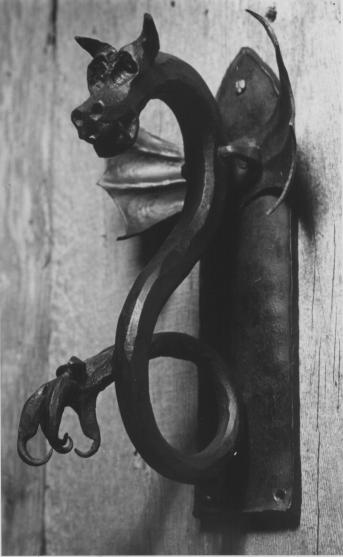 Only for an old Victorian or, preferably, Gothic
home. It's too damn big to fit in the space behind an
aluminum combination screen/storm door.
Only for an old Victorian or, preferably, Gothic
home. It's too damn big to fit in the space behind an
aluminum combination screen/storm door.
 Gates for a summer residence in Chester, Nova Scotia. The curve along
the top of the pickets is a catenary. Pickets are forged to rough
1"x1" from 1"x2" leaving the full 2" as a boss where they attach to the
top rail. A separate forged stand-off is used at the bottom.
Gates for a summer residence in Chester, Nova Scotia. The curve along
the top of the pickets is a catenary. Pickets are forged to rough
1"x1" from 1"x2" leaving the full 2" as a boss where they attach to the
top rail. A separate forged stand-off is used at the bottom.
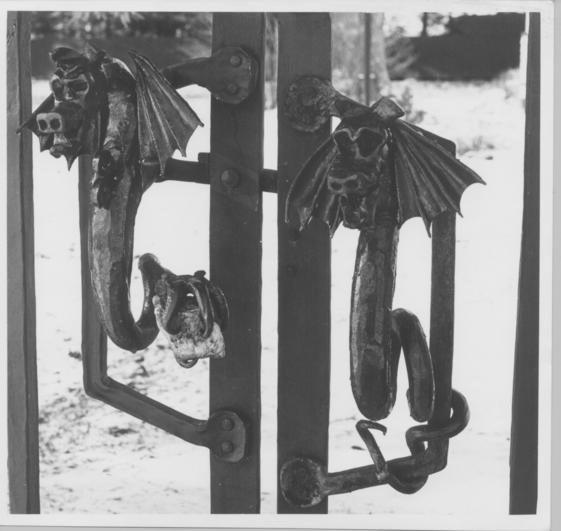 The left dragon, with a claw at the end of his tail gripping a piece
of native quartz, operates the gate latch. The finger that lifts the
latch runs through a hole in the dragon's chest and is held in place
by splitting the end, inserting a wedge and forming the small scrolls
to hold the wedge in place.
The left dragon, with a claw at the end of his tail gripping a piece
of native quartz, operates the gate latch. The finger that lifts the
latch runs through a hole in the dragon's chest and is held in place
by splitting the end, inserting a wedge and forming the small scrolls
to hold the wedge in place.

To the right of the main gates is a garden gate, shown here before installation. This gate has a fairly commonplace spring latch, not shown.
This gate, like the other pair, is joined at the corners by splitting
pockets in the 1/2" x 2" bars the hard way, driving in a drift and
closing the pocket on the drift. The horizontal members are forged at
the ends to match the drift and the rivet holes drilled after the
four pieces have been clamped together and squared up. This proved to
be an attactive and sturdy method of joining, albeit a little tedious
and error-prone in execution.
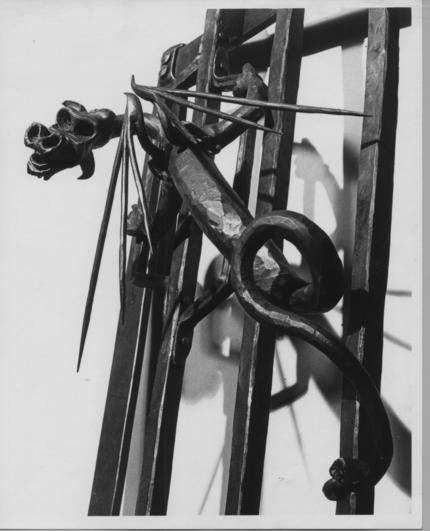
Representing the wings just with the spikey ribs was a nice way to
simplify the design and avoid cluttering the overall lines with raised
sheet metal ones. But they required several re-adjustments with the
torch before they were positioned so that those using the gate
wouldn't stab themselves on the sharp points.
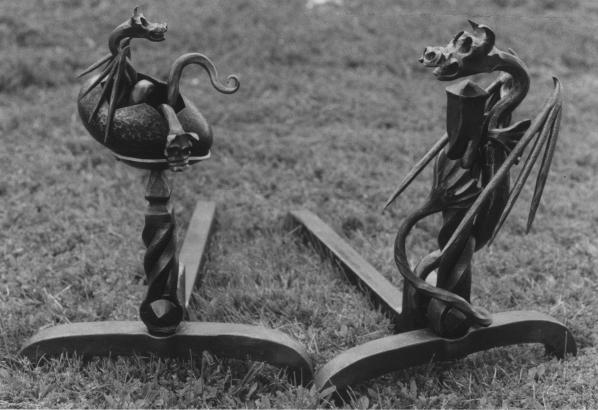
Sorry, folks, but it's out of our hands. The iron dragons have learned to reproduce on their own. Although most reptiles lay their eggs in warm, moist places, it makes sense that fire-beathing dragons would incubate the little guys as nigh the fire as possible so a nest on top of an andiron seems just right.
And it was a double-yolker!
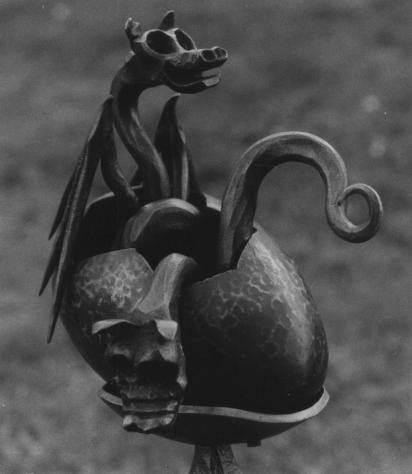
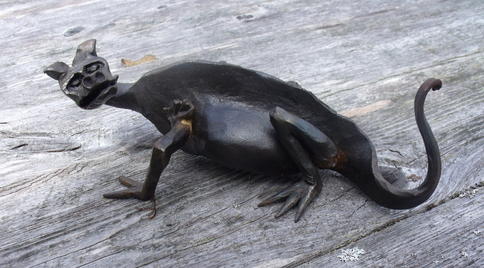
Head, body and tail forged from one thick piece, split and drifted
from the underside to give him a fat middle. Legs forged separately
and attached by concealed welding inside.
The client wanted a critter that would cling to teh wall near the ceiling so there's widget inside that fat tummy and bracket that can be screwed to a wall. A small bolt then connects the critter to the bracket and conceals it.